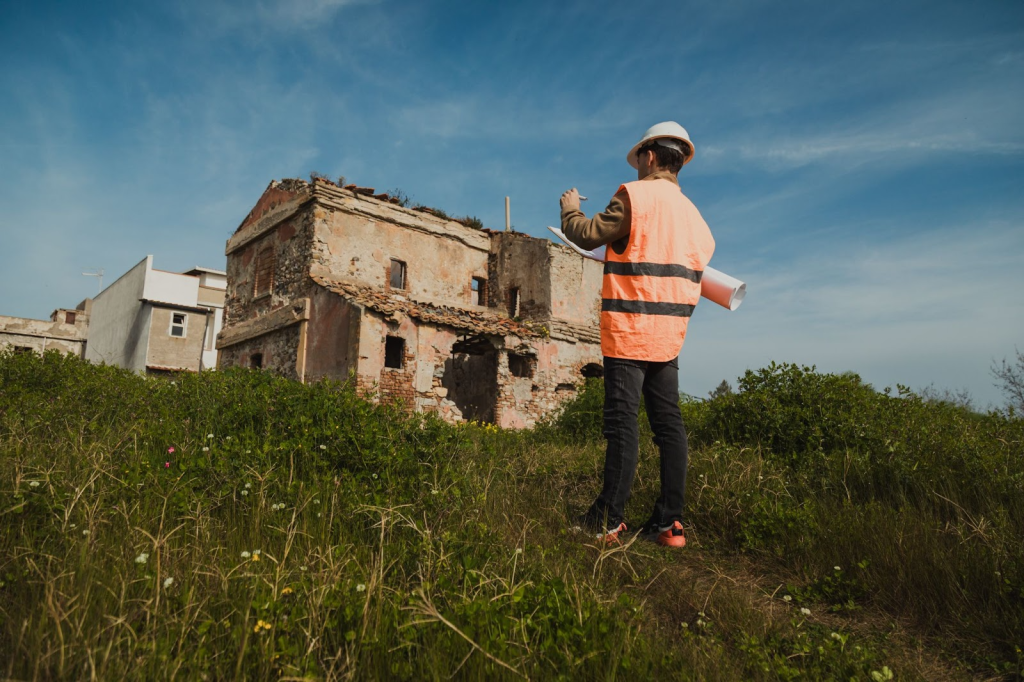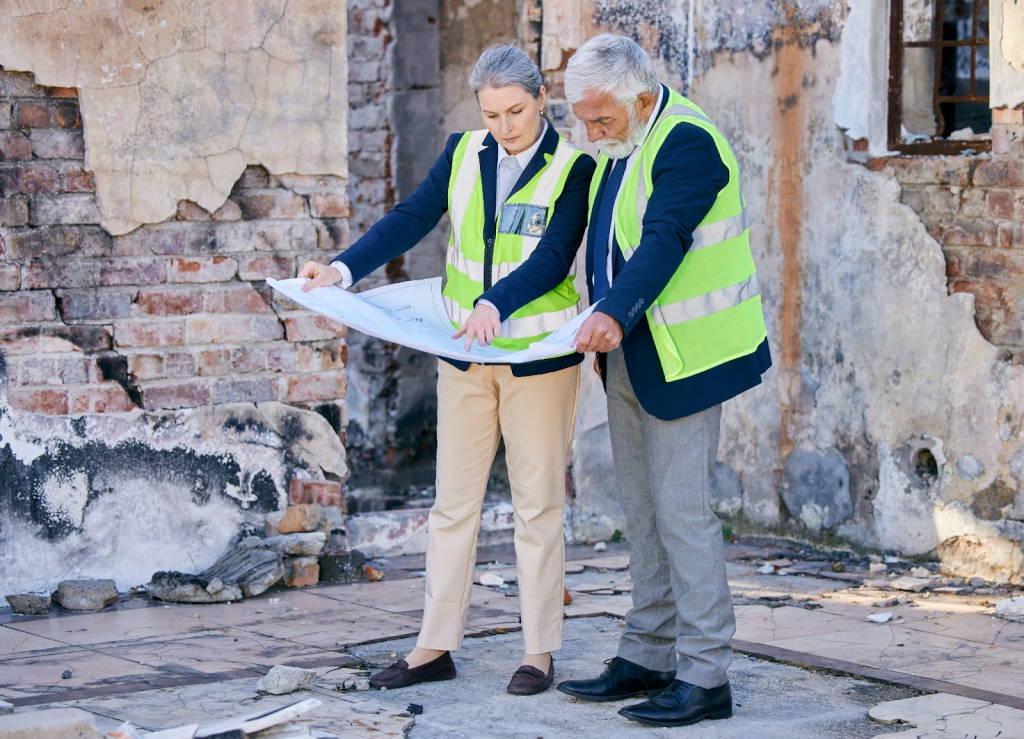
Why Professional Assessments Are Essential in Home Restoration
When disaster strikes or years of wear finally surface, restoring a home becomes more than a cosmetic project. Property owners face layers of decisions, from repairing damage to preventing it from happening again. The pressure to act fast can cloud judgment, leading to rushed choices or missed issues. Getting the complete picture early gives homeowners clarity, control, and direction. That’s where the expertise of a professional assessment truly changes everything.
Why Assessments Matter in Home Restoration
Professional assessments are the cornerstone of any home restoration project. They provide the clarity needed to move forward without wasting time or resources. Without them, property owners often rely on guesswork or visual cues, which rarely tell the whole story. Accurate evaluations reduce confusion and create a reliable foundation for every subsequent decision.
Understanding the Scope of Damage
A home can look fine on the outside but be falling apart inside. Cracks in the walls may hint at foundation issues, or water stains could signal widespread mold. Only professionals know where and how to look beyond the surface. They use tools, knowledge, and experience to detect structural issues, moisture problems, and safety hazards that go unnoticed by the untrained eye. Restoration work often covers issues without this level of scrutiny, instead of solving them.
Prioritizing Repairs With Precision
Professional assessments help determine what must be fixed now and what can wait. This sequencing prevents wasteful spending on low-priority areas. For example, addressing cosmetic drywall damage before fixing a roof leak leads to repeat repairs. With a prioritized plan, every dollar spent directly contributes to long-term recovery. That clarity saves not just money but also time and stress.
Estimating Costs With Confidence
One of the most stressful parts of home restoration is the cost. Without a proper assessment, budgeting becomes a guessing game. Professionals offer detailed reports that break down repair needs and likely expenses. These reports allow homeowners to plan, seek financing, or negotiate with insurance effectively. No one wants surprises mid-project, but an expert assessment can avoid them entirely.
Why Assessments Come First in Home Restoration
Restoring a damaged home without a professional assessment is like building on uncertain ground. What looks minor often hides deeper structural or safety risks. Homeowners need more than visual cues; they need clear, expert-driven insight. The following are the reasons professional evaluations should be your first step before any repair begins.
Expert Insight Helps Protect Property Value
Restoration should do more than patch up damage. It should protect, if not improve, your home’s long-term worth. A proper assessment gives homeowners the strategy to make decisions that strengthen property value. It also guards against the hidden consequences of quick fixes.
Ensures Structural Integrity
When structural issues go unchecked, property value takes a direct hit. Professional assessments focus first on the home’s foundation, walls, beams, and roof. Even a small crack or shift in weight-bearing walls can compromise the entire structure. Restoring without this insight could put the whole project at risk. These evaluations ensure the work being done builds strength, not just appearances.
Meets Code and Compliance Standards
Restoration must follow building codes, zoning rules, and permit requirements. Professionals stay updated on local regulations and ensure the home meets all legal standards. This step prevents fines, delays, or forced rework down the line. Moreover, if the property is ever sold, documentation of compliant restoration improves buyer trust. It’s not just about passing inspections but about restoring credibility and safety.

Prevents Future Damage
Damage rarely happens in isolation. A leak today could grow into mold tomorrow. Professionals trace damage to its root cause, helping homeowners fix it at the source. That means sealing vulnerabilities, improving drainage, or upgrading outdated materials. Long-term protection only works when assessments look ahead, not just at what’s already broken.
Reinforces Insurance Coverage and Resale Value
A detailed third-party assessment report can become valuable during insurance negotiations or property sales. Buyers and insurers trust verified documentation over verbal claims. This added layer of credibility helps homeowners prove the value of their repairs and reassures future buyers that no corners were cut. Assessments pay off even after the dust settles.
Professional Evaluations Enhance Safety
Restoration isn’t only about aesthetics or resale; safety is often the core concern. Professional assessments help prevent accidents, health risks, and future emergencies. They bring hidden dangers into focus so they can be addressed before causing harm. Safety must be built into the process, not tacked on afterward.
Detects Hazardous Materials
Older homes may contain lead paint, asbestos insulation, or other harmful substances. These are dangerous to handle without the right tools and certifications. Professionals identify these materials and arrange for safe removal. DIY testing can release toxins into the air, putting everyone at risk. Trusting certified assessors is not just smart; it’s necessary for health.
Evaluates Electrical and Plumbing Systems
Outdated wiring or hidden leaks can turn restoration into a fire hazard or water disaster. These systems must be inspected before replacing walls, floors, or ceilings. Professionals test loads, check breakers, and evaluate pipe pressure. This procedure catches risks like overheated wires or pipe corrosion. Restoration without this step often leads to tearing things apart twice.
Analyzes Fire and Water Damage
Damage after a fire or flood can be deceptive. Walls may look intact but be warped inside, or insulation could be soaking wet while the drywall appears dry. Trained assessors know how to evaluate the depth of damage, not just the surface. Their findings dictate which materials must be removed and which can be salvaged. Skipping this step leads to rot, mold, or structural weakening.
Secures Entry Points and Accessibility
Safety also involves how people enter, exit, and move through the home. Restoration assessments evaluate steps, railings, locks, lighting, and pathways. This step is essential for families with children or older adults. Upgrades to safety features are best made during restoration, not afterward. Assessments ensure that those improvements aren’t overlooked.
Accurate Evaluations Cut Costs and Delays
Home restoration is expensive even when everything goes right. Without professional input, mistakes multiply costs fast. Assessments cut unnecessary spending and reduce delays. They turn trial-and-error into focused action.
Prevents Costly Mistakes
Misjudging the source of damage leads to wasted labor and materials. For example, replacing drywall without addressing roof leaks means doing the work again soon. Professional assessments stop this cycle. They identify what’s broken and how to fix it correctly the first time, keeping projects on schedule and within budget.

Streamlines Contractor Bids
When contractors bid on vague scopes of work, costs spiral. Assessments give contractors specific, accurate data. That way, bids are based on facts, not assumptions. Homeowners can compare quotes fairly, knowing they reflect the same issues, speeding up hiring and improving transparency.
Insurance Claims Are Made Easier
Dealing with insurers after damage can be stressful. A professional assessment helps back your claim with expert evidence. Adjusters rely on this to determine payouts. Having it upfront makes negotiations smoother and faster. It also increases your chances of getting full coverage.
How to Choose a Qualified Home Restoration Assessor
Not all assessors bring the same expertise. Choosing the right one can make or break a restoration project. A good assessor doesn’t just diagnose; they help guide. Knowing what to look for saves time and builds trust from day one.
Credentials That Matter
Anyone can offer an opinion, but only trained professionals offer reliable evaluations. Look for licenses, certifications, and formal construction, engineering, or environmental safety training. Associations like IICRC or ASHI show that the assessor meets national standards. These credentials aren’t just paper, as they show experience and accountability. Make sure your assessor is someone you can legally and professionally rely on.
Local Knowledge Makes a Difference
Local experts better understand climate, soil conditions, and neighborhood regulations than out-of-town firms. They’ve seen how local homes age, flood, or crack, which helps them spot recurring issues faster. Their familiarity with local codes and inspectors reduces surprises throughout the process.
Reviews, Referrals, and Red Flags
Customer reviews tell a story numbers can’t. Look for patterns: Was the assessor thorough, punctual, and communicative? Referrals from trusted sources add another layer of credibility. Be wary of vague quotes or those who rush assessments. A professional takes time to explain what they find and what it means.
How Missed Evaluations Hurt Home Restoration Costs
Time is not on your side when damage is already present. Water spreads, mold grows, and weakened materials fail silently. Waiting for things to get “bad enough” turns manageable repairs into full-scale overhauls. An early assessment cuts off that snowball before it rolls downhill.
Damage Spreads Quietly
Moisture can sit hidden inside walls for weeks before showing signs. Pests nest in quiet corners where no one looks. A minor issue today could compromise entire systems tomorrow. That’s why professional assessments look deep and wide. Acting promptly keeps the damage from spiraling.
Costs Increase Over Time
Every delay increases costs as materials rise, labor tightens, and problems grow. A week’s delay could turn a $5,000 repair into $15,000. Assessments give you the knowledge to act while repairs are still manageable. The longer you wait, the more you risk financial instability. Knowledge upfront keeps you ahead of inflation and repair demand.
Restores Confidence in the Process
When your home is damaged, it’s easy to feel overwhelmed. Professional assessments cut through the confusion. They show you what needs to happen and when. With that knowledge, you move from chaos to control. Restoration becomes a plan, not a panic.
Start Your Home Restoration With Certainty
Guesswork in home restoration is expensive, stressful, and avoidable. An expert assessment gives you the clarity to act purposefully, not panic. It shifts the process from reactive repairs to strategic rebuilding. To move forward confidently, begin with facts, not assumptions. The sooner you know where your property stands, the brighter every step becomes.
Get clarity before you commit. Explore insights from the experts at the Express Restoration blog.
